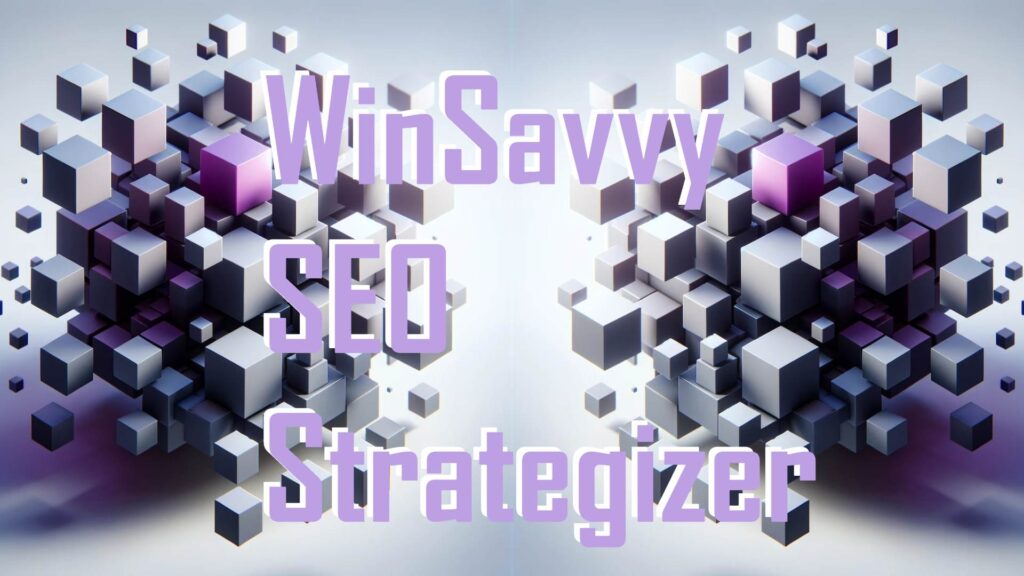Shopify is a powerful platform for building an online store, providing ease of use, great integrations, and robust features. But relying solely on Shopify for your eCommerce business can make it vulnerable. Changes in Shopify’s pricing, terms of service, or even technological issues could affect your business’s stability and growth.
To build a truly resilient eCommerce brand, you need to go beyond just your Shopify store. This article explores strategies that will strengthen your business and make it adaptable to changes, ensuring it can thrive no matter what happens on Shopify or any other platform.
Why Relying Solely on Shopify Is Risky
While Shopify is an excellent tool for eCommerce, depending entirely on it—or any single platform—poses risks:
Platform changes: If Shopify raises fees, changes policies, or modifies its algorithm, your business can be significantly impacted.
Limited control: You’re subject to Shopify’s terms, limitations, and ecosystem constraints, which can affect how you engage customers.
Dependence on third-party integrations: Many features on Shopify are delivered through apps, which come with additional costs and can lead to dependency on third-party developers.
A truly resilient eCommerce brand is built with diversification in mind. It leverages multiple channels, cultivates direct customer relationships, and uses strategic assets that Shopify alone can’t provide.
Step 1: Establish a Strong Brand Identity
a) Create a Unique Brand Story and Vision
A memorable brand goes beyond just selling products; it tells a story that resonates with people. Identify the “why” behind your business, and use it to create a brand story that customers can connect with. Define your brand’s mission, vision, and values to show people what your business stands for.
For instance, if your brand is committed to sustainability, make that a central part of your story. Your brand identity should go beyond your Shopify store, permeating your marketing materials, website, and communication. A strong brand identity helps customers see you as more than just an eCommerce store—it positions you as a trusted and meaningful presence.
b) Build Brand Assets Outside of Shopify
A resilient eCommerce brand requires assets you fully control. Start by developing a standalone website or blog that reinforces your brand’s mission and offers valuable content for your audience. This helps in building an audience and drives traffic beyond your Shopify store.
Use SEO to attract organic traffic by creating blog posts, guides, or other valuable content related to your products or industry. This SEO-optimized content attracts traffic from search engines and keeps customers engaged with your brand, building loyalty and recognition.
Step 2: Diversify Your Sales Channels

a) Sell Across Multiple Marketplaces
While Shopify is an effective platform, diversifying your sales channels helps you reach a wider audience and reduces dependency on any single source of revenue. Consider expanding to other marketplaces like Amazon, eBay, and Walmart. These platforms offer access to large audiences and can act as additional revenue streams.
Each marketplace has its own rules and best practices, so ensure that you optimize product listings accordingly. For example, Amazon requires a different approach to SEO and customer engagement than Shopify. By diversifying your marketplaces, you protect your business from potential Shopify disruptions.
b) Leverage Social Commerce
Social media platforms like Instagram, Facebook, and Pinterest have introduced shopping features that allow customers to buy directly through their apps. Using social commerce gives your brand a stronger presence on platforms where customers are already active and makes it easier for them to shop without needing to visit your website or Shopify store.
Promote products on these social channels, engage with your audience, and use the shopping features to convert followers into customers. This approach makes your brand visible across multiple touchpoints, creating more opportunities for sales and engagement beyond Shopify.
Step 3: Build and Nurture Your Own Customer Database
a) Focus on Email Marketing and SMS
Owning your customer data is crucial for creating a resilient eCommerce brand. Email and SMS marketing are powerful ways to reach customers directly, regardless of platform changes or algorithm shifts. When you own a customer’s contact information, you can keep them engaged with newsletters, exclusive offers, and product updates.
Create valuable and personalized email campaigns to nurture relationships and encourage repeat purchases. Segment your audience based on interests, purchase history, and engagement levels to deliver targeted messages that increase the chance of conversion. SMS is also effective for time-sensitive promotions, such as flash sales, limited-time discounts, and product launches.
b) Use Lead Magnets to Grow Your Contact List
Lead magnets, such as exclusive discounts, free shipping offers, or downloadable guides, encourage website visitors to sign up for your email list. Once you have their contact information, you can nurture these leads through targeted campaigns, turning them into loyal customers.
Integrate lead magnet sign-ups on your site, product pages, and blog to capture as many leads as possible. By building a robust database of leads and customers, you’re creating a valuable asset that’s independent of Shopify and offers direct access to your audience.
Step 4: Invest in SEO and Content Marketing
a) Optimize Your Website for Organic Traffic
Investing in SEO ensures that your business can attract organic traffic from search engines, reducing reliance on paid ads and other platforms. Conduct keyword research to understand what your audience is searching for, and create optimized content that answers their questions or addresses their needs.
On-page SEO, such as optimizing product pages, blog posts, and landing pages, improves your site’s visibility on search engines. Focus on long-tail keywords that capture search intent, making it easier to rank for relevant terms that attract qualified leads.
b) Create a Content Hub with Valuable Resources
A content hub—like a blog or resource center—allows you to publish valuable resources that help build your brand’s authority and engage your audience. Create content that educates, entertains, or solves problems related to your industry or product. This strategy not only drives organic traffic but also helps you nurture leads by providing resources they genuinely find useful.
For instance, if you’re in the fitness industry, a content hub with workout tips, nutrition guides, and fitness advice will attract and engage customers who could eventually purchase your products. Content marketing builds trust, attracts a steady stream of visitors, and positions your brand as a knowledgeable resource, even if Shopify faces disruptions.
Step 5: Cultivate a Strong Community Around Your Brand

a) Build a Community on Social Media
Social media platforms are great for building a community of engaged followers. Share user-generated content, host live Q&A sessions, and create interactive posts that encourage engagement. A loyal community around your brand ensures that customers continue to engage with you directly, regardless of changes on Shopify.
An active community creates a sense of belonging for your customers, increasing loyalty and word-of-mouth marketing. Respond to comments, messages, and mentions to foster genuine connections with your followers and show them that their voices are heard.
b) Launch a Branded Forum or Community Space
For a more controlled community experience, consider launching a private forum or community group on platforms like Slack, Discord, or even a Facebook Group. These groups offer a space for your customers to interact with each other, share experiences, and receive updates directly from your brand.
A branded community space gives customers a place to discuss products, ask questions, and receive exclusive content. This helps deepen brand loyalty and reduces the risk of disengagement if your Shopify store experiences issues.
Step 6: Expand Beyond Paid Ads
a) Explore Influencer Partnerships
Influencer partnerships provide an alternative to traditional paid ads and offer access to established audiences. Partner with influencers whose followers align with your target demographic and collaborate on campaigns that showcase your products. Influencers can share authentic product reviews, tutorials, and endorsements that reach a highly engaged audience.
Influencer marketing provides credibility and builds awareness among new audiences. It’s also less dependent on Shopify and algorithms, making it a more stable approach to reaching potential customers.
b) Encourage Organic Word-of-Mouth Marketing
Word-of-mouth marketing is one of the most effective ways to gain new customers. Encourage satisfied customers to leave reviews, refer friends, and share their experiences on social media. Provide incentives, like discounts or rewards, for referrals and testimonials to encourage organic sharing.
Create shareable content that encourages customers to post about your brand, such as branded hashtags or a social media challenge. Word-of-mouth recommendations build trust and help expand your reach naturally, offering long-term stability for your brand.

Related: Check out our free tools:

Step 7: Focus on Customer Experience and Loyalty Programs
a) Provide Exceptional Customer Service
Excellent customer service is one of the most reliable ways to build a resilient brand. Offer fast, helpful, and friendly support that makes customers feel valued. Train your customer service team to handle inquiries efficiently and go the extra mile to make customers happy.
Happy customers are more likely to return and spread positive word-of-mouth, which reduces dependency on third-party platforms for new customer acquisition. A reputation for great service strengthens brand loyalty and improves customer retention.
b) Develop a Customer Loyalty Program
Implementing a customer loyalty program incentivizes repeat purchases and keeps your audience engaged with your brand. Offer points, discounts, or exclusive rewards to customers who make frequent purchases, refer friends, or participate in promotions.
Loyalty programs create long-term engagement, as customers are more likely to return to your brand to earn rewards. This reduces reliance on Shopify’s algorithms for consistent sales, helping your business achieve more stability and customer retention over time.
Step 8: Monitor and Adapt to Industry Changes

a) Stay Informed About eCommerce Trends
To maintain resilience, stay informed about trends and changes in the eCommerce industry. Understand how digital privacy, algorithm shifts, and new marketing channels can impact your business. By staying proactive, you can adapt your strategy to new developments and avoid disruptions.
Attend industry webinars, read industry blogs, and network with other eCommerce professionals to stay ahead. This knowledge will help you make decisions that keep your brand competitive and resilient against changes that may affect Shopify or other platforms.
b) Regularly Review and Diversify Your Tech Stack
As your business grows, regularly assess the tools you use. While Shopify might be the backbone of your eCommerce platform, look into other solutions for email marketing, customer service, analytics, and inventory management. Tools like Klaviyo, HubSpot, or even WooCommerce can complement Shopify and give you additional flexibility.
By diversifying your tech stack, you reduce dependency on a single platform, allowing your business to scale and pivot as needed. An adaptable tech stack ensures that you can transition smoothly if changes happen on Shopify or other channels.
Step 9: Embrace Data-Driven Decision-Making
a) Track Key Metrics Across All Channels
Data is one of the most valuable assets in a modern eCommerce brand. Rather than relying solely on Shopify’s analytics, utilize tools like Google Analytics, Mixpanel, or Hotjar to gain a holistic view of your customer’s journey across various channels. Track metrics like customer acquisition costs, conversion rates, average order value, and customer lifetime value.
These insights will help you make informed decisions about marketing strategies, product offerings, and customer retention efforts. Understanding these metrics enables you to spot trends early, address potential issues, and continually optimize your business’s performance.
b) Implement A/B Testing to Refine Strategies
A resilient brand is one that’s always testing, learning, and improving. Implement A/B testing on everything from email subject lines and ad creatives to website layouts and product descriptions. Small adjustments, informed by data, can yield big improvements in engagement and conversions over time.
For example, testing different offers in your email campaigns can help you understand what drives more sales. Similarly, testing variations in your product pages or checkout process can reveal ways to increase conversions. Regular testing helps your brand stay competitive and keeps your marketing efforts sharp.
Step 10: Build a Scalable Fulfillment and Inventory System

a) Diversify Your Fulfillment Options
To prevent dependency on Shopify’s fulfillment network (or any single fulfillment solution), explore multiple options that can grow with your brand. Consider working with third-party logistics (3PL) providers or maintaining relationships with multiple fulfillment centers. This approach ensures that, even if there are changes in one service, you can seamlessly transition to another without disrupting your operations.
For example, having a backup 3PL can be invaluable during high-demand seasons or if there are unexpected issues with your primary fulfillment provider. A diverse fulfillment setup not only protects your brand from interruptions but also gives you more control over shipping costs, delivery speeds, and customer satisfaction.
b) Use Inventory Management Tools for Better Forecasting
Effective inventory management is essential for preventing stockouts and overstock situations. By investing in inventory management software, you can track real-time stock levels, forecast demand, and plan for seasonal fluctuations. Look for tools that integrate well with Shopify but also offer compatibility with other eCommerce platforms and marketplaces.
With robust inventory management, you’re prepared for surges in demand and can reduce the risk of lost sales due to stock issues. This capability enhances your brand’s reliability and helps you scale efficiently, which is critical to resilience.
Step 11: Prioritize Customer Feedback and Product Development
a) Collect and Act on Customer Feedback
Customer feedback is invaluable for a resilient eCommerce brand. Regularly collecting feedback allows you to understand what your customers love, where you can improve, and what new features or products they’re looking for. Use surveys, product reviews, and social media to gather insights and stay tuned to what matters most to your customers.
When you take customer feedback seriously and use it to make improvements, you build loyalty and trust. Customers appreciate brands that listen, and this responsiveness strengthens your relationship with them, regardless of platform changes.
b) Innovate with Product Development Based on Insights
A resilient brand doesn’t remain stagnant—it evolves with its customers. Use the insights gained from customer feedback and data analysis to refine and expand your product offerings. If you notice consistent demand for a certain feature, color, or product variation, work with your suppliers to bring these ideas to life.
Product development based on customer insights can set your brand apart from competitors and establish you as an industry leader. By regularly introducing new, customer-driven products, you’re not only meeting demand but also enhancing customer satisfaction and loyalty.
Step 12: Focus on Long-Term Customer Relationships
a) Foster Repeat Purchases with Retention Strategies
Customer retention is often more cost-effective than acquisition, and it’s essential for long-term resilience. Implement strategies to encourage repeat purchases, such as offering loyalty points, personalized discounts, and early access to new products. Retaining existing customers not only stabilizes your revenue but also fosters word-of-mouth marketing.
Customer retention programs, like loyalty and rewards, increase lifetime value and make customers feel valued, incentivizing them to return. Over time, your customer base becomes a steady source of revenue, reducing your dependence on acquiring new customers solely through paid advertising.
b) Invest in Post-Purchase Engagement
Your relationship with a customer shouldn’t end once they make a purchase. Post-purchase engagement, like follow-up emails, personalized recommendations, and order tracking, enhances the customer experience and keeps them connected to your brand. Simple gestures like “thank you” emails or requests for product reviews make customers feel appreciated.
A strong post-purchase experience can significantly improve customer loyalty. Plus, by keeping customers engaged after their initial purchase, you create additional touchpoints that encourage future purchases and referrals.
Step 13: Plan for Future Growth with Diversification in Mind
a) Explore Additional Product Lines or Services
Diversification isn’t just about platforms; it’s also about product offerings. Expanding your product line or introducing complementary services helps meet more of your customers’ needs and keeps them engaged with your brand. Think about add-ons or supplementary products that align with your existing offerings.
For example, if you sell home fitness equipment, consider offering workout plans, nutrition guides, or branded merchandise. By diversifying your product range, you create multiple revenue streams and make your brand more resilient to changes in customer preferences.
b) Consider International Expansion for New Markets
If your brand has found success locally, expanding internationally can be a significant growth opportunity. International markets offer new audiences and additional revenue streams, making your brand more resilient. While international expansion requires careful planning for logistics, taxes, and regulations, it can significantly strengthen your brand.
Research potential markets, adapt your products to local preferences if needed, and ensure you have reliable fulfillment solutions in place. International diversification protects your business from regional economic downturns and opens up a new world of growth opportunities.
Conclusion: Building a Resilient eCommerce Brand Beyond Shopify
Building a resilient eCommerce brand is about creating a strategy that goes beyond just a Shopify store. By focusing on brand identity, diversifying sales channels, and nurturing direct customer relationships, you’re building a business that can withstand platform changes, adapt to new trends, and sustain growth.
From leveraging email marketing and SEO to building a community and offering exceptional customer service, resilience is about proactively reducing dependency and increasing customer loyalty. With these strategies, your eCommerce brand can thrive independently, build a loyal following, and stand strong no matter what happens on Shopify or any other platform.
By investing in long-term strategies, you’re not only making your brand stronger but also creating a business that’s prepared for whatever the future holds. In the end, resilience is the key to lasting success in a dynamic eCommerce landscape.
READ NEXT:
- Are Vanity Metrics Killing Your Marketing Efficiency? Here’s What to Track Instead
- Pinpointing Digital Marketing ROI: Why Your Metrics Aren’t Telling the Full Story
- Unlocking Real ROI in Digital Marketing: The Hidden Costs Draining Your Budget
- How Misaligned Marketing Funnels Are Blocking Your ROI Potential
- Best Digital Marketing Agency In Santa Ana, California
- Best Digital Marketing Agency In San Francisco, California





















